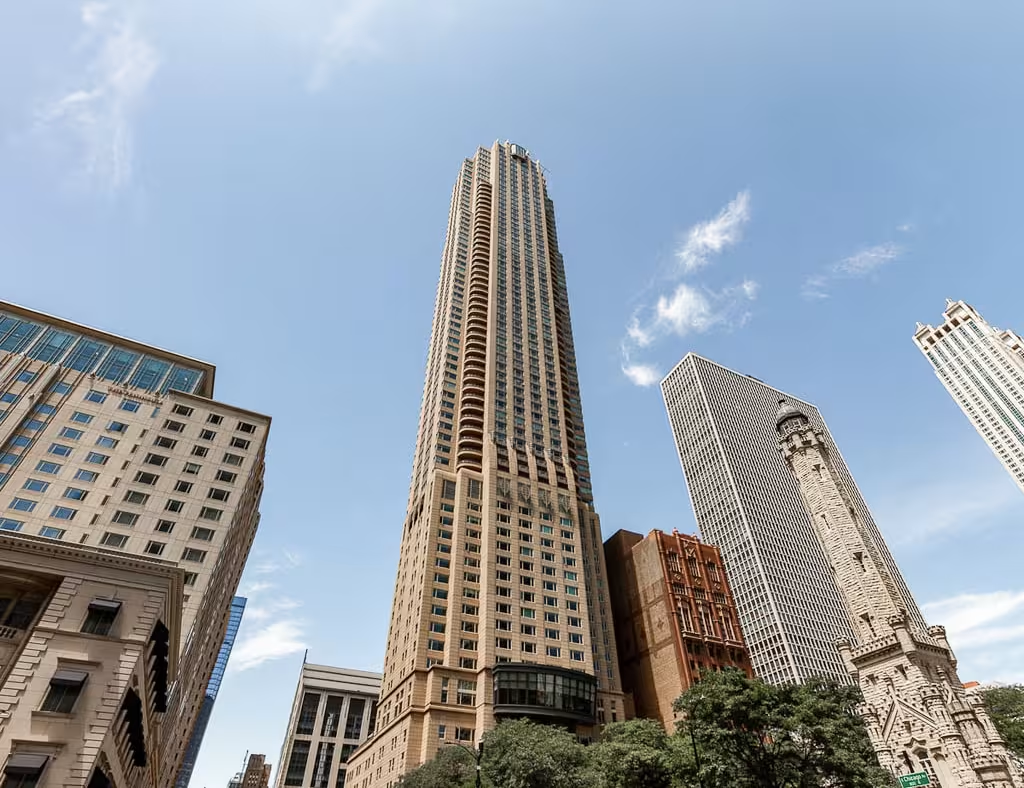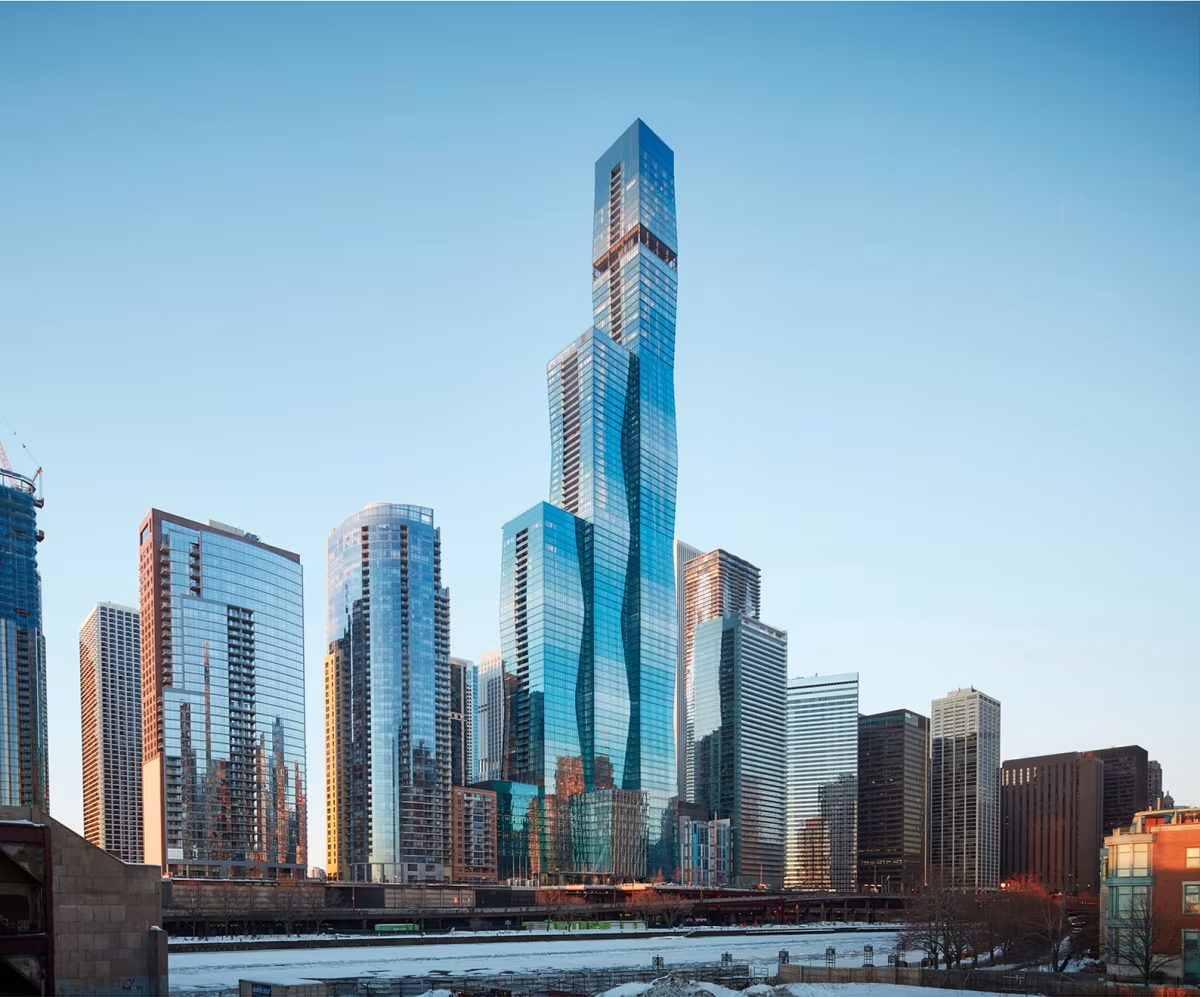Park Tower vs St. Regis Chicago


Comparing the Park Tower and the St. Regis Chicago is interesting because they both rise in Chicago, IL, yet they were conceived by two different design teams, Lucien Lagrange Architects and Studio Gang Architects, and were completed at different points in time. They were finished over two decades apart.
This contrast within the same city allows us to see how different creative minds interpreted the evolving needs of Chicago across time.
Let's take a closer look!
Height & Size
The St. Regis Chicago is clearly the larger tower of the two, both in terms of height and number of floors. It rises to 1194ft (364m) with 101 floors above ground, while the Park Tower reaches 844ft (257.4m) with 68 floors above ground.
Of course, each project may have faced different briefs or regulatory constraints, which we don't really know about and could also explain the outcome.
Architectural Style
Both the Park Tower and the St. Regis Chicago were designed in line with the aesthetic conventions of the Contemporary style.
At the time, this style was at the height of its popularity. So both Lucien Lagrange Architects and Studio Gang Architects followed what was in many ways expected of them, producing designs that fit comfortably within contemporary architectural norms, rather than breaking with convention.
Uses
The Park Tower follows a mixed-use model, combining hotel and residential. In contrast, the St. Regis Chicago has remained primarily residential.
Both towers incorporate hotels as part of their program. The Park Tower features a 5-star hotel with 203 rooms, while the St. Regis Chicago includes a 5-star hotel with 192 rooms. For more details, see the official website of the Park Tower. You can also visit the official website of the St. Regis Chicago.
In terms of capacity, the Park Tower offers 117 apartments, while the St. Regis Chicago provides 393 units.
The St. Regis Chicago also provides 295 parking spaces.
Structure & Facade
Both towers share the same structural solution, a Frame system.
A frame structure uses a grid of columns and beams to carry the building's loads. This frees the walls from structural duties, allowing for flexible floor plans and larger windows.
However, when it comes to the facade, both buildings use different approaches. The Park Tower uses a Modular facade, while the St. Regis Chicago uses a Curtain Wall facade.
A Modular facade like the one seen in the Park Tower employs prefabricated panels, often mixing solid surfaces with smaller windows, while a curtain-wall facade like the one seen in the St. Regis Chicago uses a lightweight glass curtain wall hung from the structure.
| Park Tower | St. Regis Chicago | |
|---|---|---|
| Lucien Lagrange Architects | Architect | Studio Gang Architects |
| 1994 | Design Ended | 2016 |
| 1998 | Construction Started | 2016 |
| 2000 | Year Completed | 2021 |
| Contemporary | Architectural Style | Contemporary |
| Mixed | Current Use | Residential |
| 68 | Floors Above Ground | 101 |
| 239.1 | Last Floor Height | 351 |
| 257.4 m | Height (m) | 364 m |
| 72,464 m² | Usable Area (m²) | 131,400 m² |
| 117 | Residential Units | 393 |
| Frame | Structure Type | Frame |
| Reinforced Concrete | Vertical Structure Material | Reinforced Concrete |
| Reinforced Concrete | Horizontal Structure Material | Reinforced Concrete |
| No | Facade Structural? | No |
| Precast Concrete | Main Facade Material | Aluminum, Glass |
| LR Development | Developer | Magellan Development Group |
| Chris Stefanos Associates | Structural Engineer | Magnusson Klemencic Associates |
| IL | State | IL |
| Chicago | City | Chicago |
| 800 North Michigan Avenue | Address | 363 East Wacker Drive |